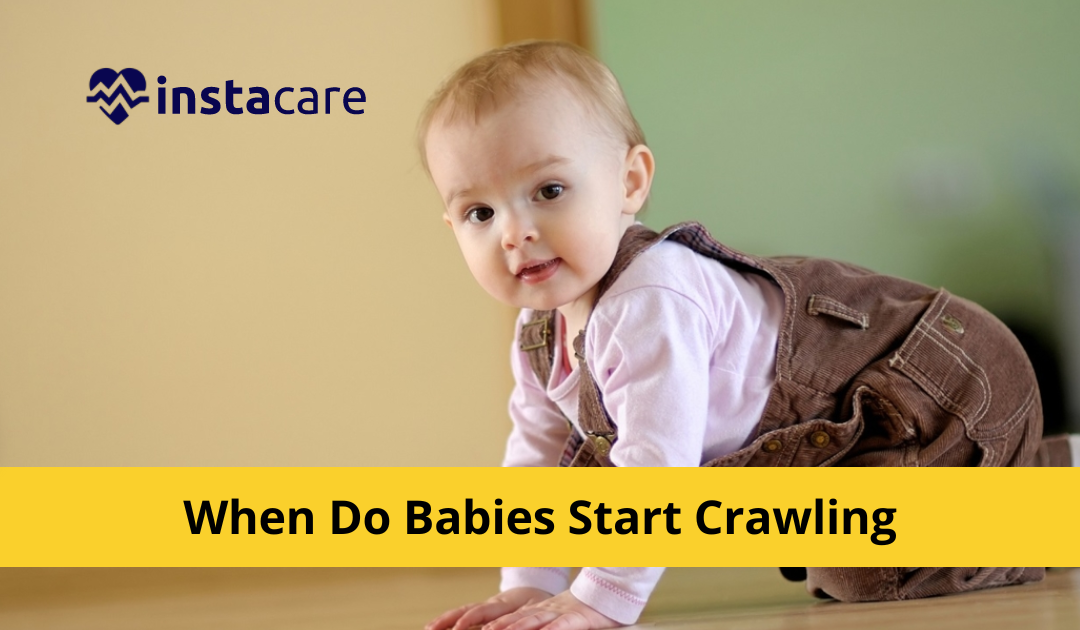Crawling is one of the key developmental milestones that all parents look forward to experiencing with their little one. It marks a major step forward in your baby's growth and development – from being totally dependent on you for movement, your baby suddenly has newfound freedom to explore the world around them!
As exciting as it is, mastering the art of crawling does require some amount of practice and can come with a few challenges along the way. In this blog post, we'll take a closer look at what baby crawling involves, discuss ways you can encourage progress towards achieving this milestone, and offer tips on how to help keep your little explorer safe while they make those first exploratory steps into discovering more about their surroundings.
When do babies start crawling?
Babies typically start crawling at around 7-10 months of age, but it can happen earlier or later, depending on the individual baby. Crawling is the first major milestone babies achieve in the development of their movement skills. It allows them to use their arms and legs to move around independently and explore the world around them.
Babies usually develop their coordination gradually over time, so their crawling spells may look quite different from one another. They might crawl with two hands and one leg instead of all fours, for example. No matter what form babies’ crawling takes, it helps pave the way for other gross motor skills such as standing up and walking.
Signs a baby is ready to crawl
When babies start to crawl, it is an exciting milestone. A baby who is showing signs that they are ready to crawl will typically push up from their tummy with their arms, or try to twist and turn while lying down.
They may also be interested in watching others move around the room, and make movements of their own body as if attempting to imitate crawling. Babies are also likely to become fascinated by toys which move around the floor, and might reach out for them while on their tummies. If you notice any of these signs in your baby, they are more than likely ready to start crawling!
View More: Sleep Regressions in Babies Signs Causes And Ages
Types of crawling
Crawling is a fundamental skill babies learn early on. But many are unaware that there are several types of crawling babies can practice. Spontaneous crawling, or commando crawling, is the most common form babies start out with and involves babies propelling themselves forward by pushing off their arms and legs while their bellies are flat against the surface they’re crawling on.
Alternatively, babies can crawl using the cross-pattern method which involves alternating arms and legs; the right arm and left leg move together, followed by the left arm and right leg. For babies who need a bit more help getting around, there's also bear crawls and scooting in which babies use all fours but remain more upright.
Finally, creeping—sometimes called army crawl—sees babies lift their bellies as they alternate arms and legs. Learning how to crawl provides babies with a sense of freedom from movability!
Can you teach a baby to crawl?
It's a common misconception that babies must be taught to crawl, when in actuality babies instinctively start to crawl when they're ready. Generally babies will start to move their arms and legs around at around 6-10 months.
After the initial movements babies can begin pulling themselves up onto their hands and knees, rocking back and forth, or even crawling forwards or backwards. While babies do need some support along the way so they don't get too frustrated at not being able to make progress, it doesn't mean you have to dive in and show them specific crawling motions; instead allow your baby the time to explore its capabilities and it'll be crawling before you know it!
View More: Children Eye Health And Safety Month
What if your baby doesn’t crawl as expected?
Every baby is different, so it can be difficult to predict when babies will start crawling. However, if your baby does not crawl by the expected age, don't worry just yet! Babies can start crawling from as early as five months old or as late as a year old – there is no set timeline.
It's important to remember that babies have different physical abilities, and some will take longer than others to build the strength needed for crawling. Provided your child is showing signs of physical development in other ways (e.g., rolling over or standing up with support), keep in mind that babies usually get there eventually! If you’re concerned about your baby’s progress, speak to your doctor for further advice.
Conclusion
Crawling is an exciting milestone for both babies and parents. As a parent, you should be patient, supportive, and encouraging as your baby goes through this development. The variables at play are wide-ranging – from the age of the baby to their physical health – so it's impossible to tell when your child will make their first crawl.
However, if your child doesn't seem to be aiming for that goal, it's important that you speak with your pediatrician and ask for their guidance to ensure all milestones are appropriately attained.
Crawling is a major milestone and can provide great insight into further motor skills of our kids. It's something we should hold dear and celebrate, because without it our little ones won't experience independence very early in life. Through fostering confidence and allowing them to learn with trial and error on how to move around properly while they explore everything around them – crawling will become easier and extra delightful!
Please book an appointment with the Best ENT Specialist in Lahore, Karachi, Islamabad, and all major cities of Pakistan through InstaCare, or call our helpline at 03100002273 to find the verified doctor for your disease.
Source: https://instacare.pk/blog/when-do-babies-start-crawling

